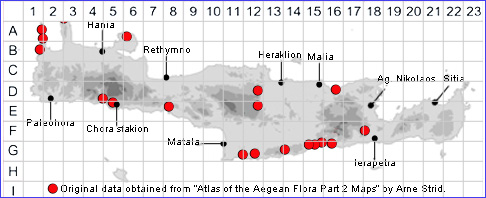SPECIES DESCRIPTION
MELILOTUS GRAECUS
Family and Genus:- See- LEGUMINOSAE
Common Names:- Small melilot
Homotypic Synonyms:- Pocockia graeca, Trigonella graeca.
Meaning:- Melilotus (Gr) Honey-clover. A name used by the Greek academic
Theophrastus and refers to melilot's attractiveness to honeybees.
Graecus (L) Grecian, Greek.
General description:- Glabrous, ascending to erect annual.
Stems:-
1) 10-30 cm, often branched from the base.
Leaves:-
1) Leaflets, 10-15 x 7-12 mm, obovate-cuneate, shallowly dentate at the apex,
somewhat fleshy.
2) Stipules, lanceolate-acuminate, dentate to incised.
Flowers:-
1) Peduncles, 4-6 cm, longer than the petiole of the subtending leaf.
2) Inflorescence, a lax, 8-12-flowered raceme.
3) Calyx, 2-5 mm, usually campanulate.
a) teeth, 1/2 as long as the tube.
4) Corolla, 7-10 mm. yellow.
Fruit:-
1) Legume, ftat, parchment-like, broadly elliptical, 10-13x 8-12 mm, 2-3-seeded,
with a broad membranous wing; veins distinct, sparsely anastomosing.
2) Seeds, 2-3, c. 4 mm, ovoid, brown, tuberculate.
Key features:-
1) Calyx, 2-5 mm, usually campanulate.
2) Legume, flat, 12-20 x 10-15 mm; membranous, with a broad membranous wing
on the suture.
4) Corolla, 7-10 mm.
Habitat:- Sandy and gravelly coastal habitats, olive groves, evergreen and mixed
scrub. 0-700 m.
Distribution:- Fairly common in S & W Greece. Limited distribution on Crete
mainly around coastal areas.
Flowering time:- Late Mar-May.
Photos by:- Dr. Armin Jagel

